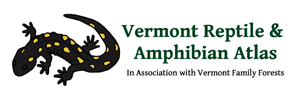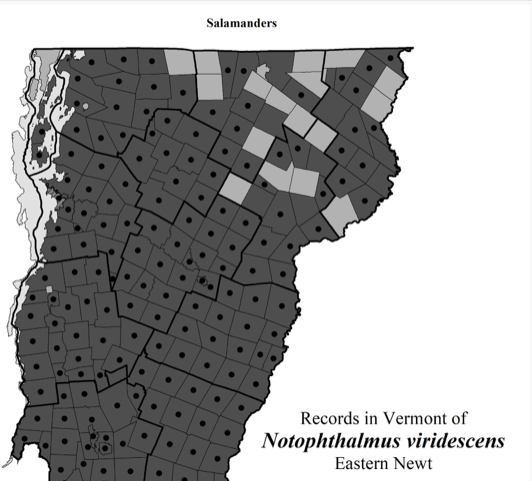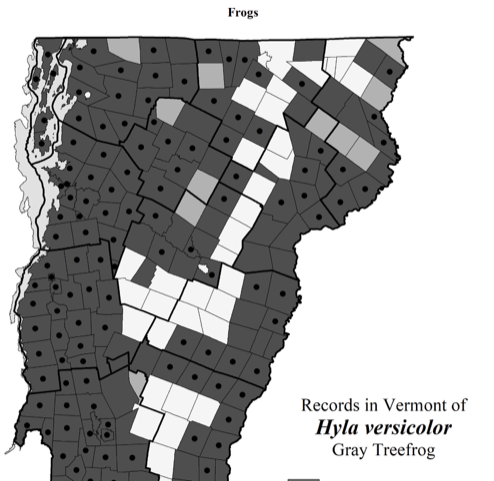Herp Update: Northeast Kingdom; Mink Frogs, Gray Treefrogs — June 28, 2022
Herps in the Northeast Kingdom (NEK)
My assistant Matt Gorton and I recently took a trip to the Northeast Kingdom (NEK) to try to fill in some distribution gaps in Avery’s Gore and Averill. As of the 2020 census, Avery’s Gore had a population of zero. Hence, we don’t get any herp reports from residents. Averill has a population of 21 and we do get the occasional report from campers or visitors to some of the lakes in Averill, but gaps still remain. We successfully added or updated a nice variety of amphibian and reptile species from those two towns while at the same time scaring three bear and one moose.
The NEK is unique in that some herp species found in most of the rest of the state are either missing or quite rare in that area. For instance, there are only three species of snake that have been reported from that area: Common Gartersnake, Red-bellied Snake, and Ring-necked Snake. Other species that we consider very common in central Vermont are very difficult to find up there. For example, Matt and I had to work hard to find a single Eastern Newt in Avery’s Gore and newts have never been reported at all from quite a few towns in that area (see attached map). The same is true for Gray Treefrogs, but as the attached map shows, they also become quite difficult to find as you increase in elevation as well.
We were pleased to find a few Mink Frogs in Unknown Pond in Avery’s Gore (photobelow). There are no roads to Unknown Pond, but there are a couple hunting camps in there that are apparently accessed either by foot, snow machine, or four wheeler. Mink Frogs are essentially a Canadian, cold-water species, whose range extends south into northeastern Vermont. They are similar in appearance to the other two “green-faced frogs” (American Bullfrog and Green Frog), but they have oval spots on their legs and give off an unusual garlic smell when handled.

Gray Treefrogs
Gray Treefrogs are much easier to hear than they are to see. Check out the below photo sent in earlier this month from Thetford. It should convince you that Gray Treefrogs are easy to miss. 
Their scientific name (Hyla versicolor) reflects their ability to change their skin color to match their background, as long as they can do it with whites, grays, and greens. Their lichenate (looks like lichen) pattern helps them hide against the tree bark. The second Gray Treefrog photo was taken by Dan Larsen and shows a particularly attractive combination of background color and pattern color.

Jim Andrews
“Anyone who believes that exponential growth can go on forever in a finite world is either a madman or an economist” (Kenneth Boulding, 1973)



